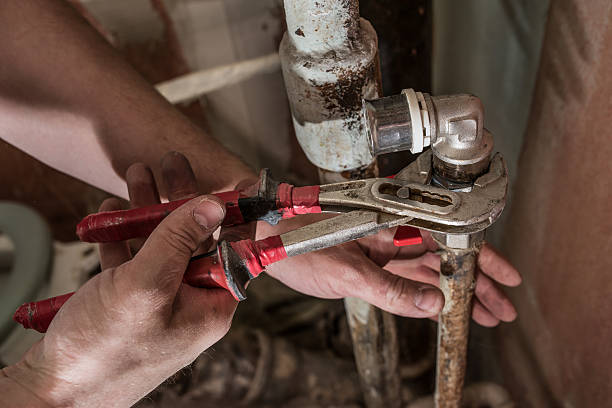Old plumbing systems can be a time bomb in any home, posing hidden dangers that can lead to costly repairs and potential health risks if not addressed in time. As pipes age, they become susceptible to various problems that can compromise the safety and efficiency of your plumbing system. In this blog post, we’ll explore the hidden dangers of old plumbing and offer practical advice on addressing them.
Combatting Corrosion: The Hidden Threat in Old Plumbing Systems
One of the most common issues with old plumbing is corrosion. Over time, pipes made of metal, such as iron or copper, can corrode, leading to leaks and reduced water quality. Corroded pipes can also result in unsightly discolored water, which poses health risks if consumed. To address corrosion, it’s essential to have your pipes inspected by a professional plumber who can assess their condition and recommend replacement.
Protect Your Health: Identifying and Addressing Leads in Older Home Plumbing Systems
Homes built before the 1980s may have plumbing systems that contain lead, a toxic metal that can leach into your drinking water. Exposure to lead can cause serious health problems, especially for young children and pregnant women. If you suspect your home has lead pipes or fixtures, it’s crucial to get your water tested and consider replacing the lead components with safer alternatives.
Preventative Measures: Maintaining Old Plumbing to Avoid Costly Clogs and Damage
Old plumbing is more prone to clogs and blockages due to years of buildup from grease, hair, soap, and other debris. If left untreated, these blockages can lead to slow drains, sewage backups, and even burst pipes. Regular maintenance, such as using drain strainers and avoiding pouring grease down the sink, can help prevent clogs. Professional drain cleaning services may be necessary for persistent blockages.
Protect Your Property: The Importance of Maintaining and Upgrading Your Sewer Line
The sewer line is an integral part of your home’s plumbing system and is responsible for carrying waste away from your property. Clay or cast iron sewer lines can crack or collapse in older homes due to tree root intrusion or ground shifting. A damaged sewer line can result in sewage backups, foul odors, and even sinkholes in your yard. Inspecting your sewer line regularly and considering replacing it with more durable materials like PVC is important.
Upgrade Your Home: The Benefits of Replacing Old Plumbing Fixtures With Water-Efficient Models
Old plumbing fixtures, such as faucets, toilets, and showerheads, can be inefficient and prone to leaks. Replacing these fixtures with modern, water-efficient models can help reduce water waste and lower utility bills. Additionally, new fixtures can provide better performance and update the look of your bathroom or kitchen.
Protect Your Home: Understanding and Addressing the Risks of Aging Plumbing Systems
The hidden dangers of old plumbing should not be ignored, as they can lead to significant damage and health risks. Regular inspections and maintenance are key to identifying potential problems early on. When necessary, replacing old pipes and fixtures with newer, more reliable options can ensure the safety and efficiency of your home’s plumbing system. If you need clarification on the condition of your plumbing, consulting with a professional plumber can provide peace of mind and help keep your home safe and comfortable.

